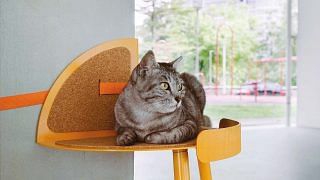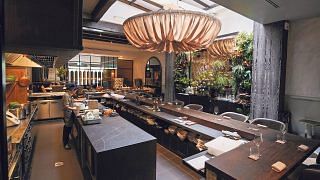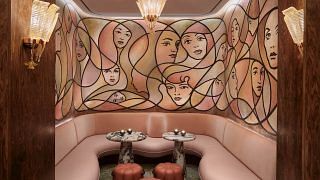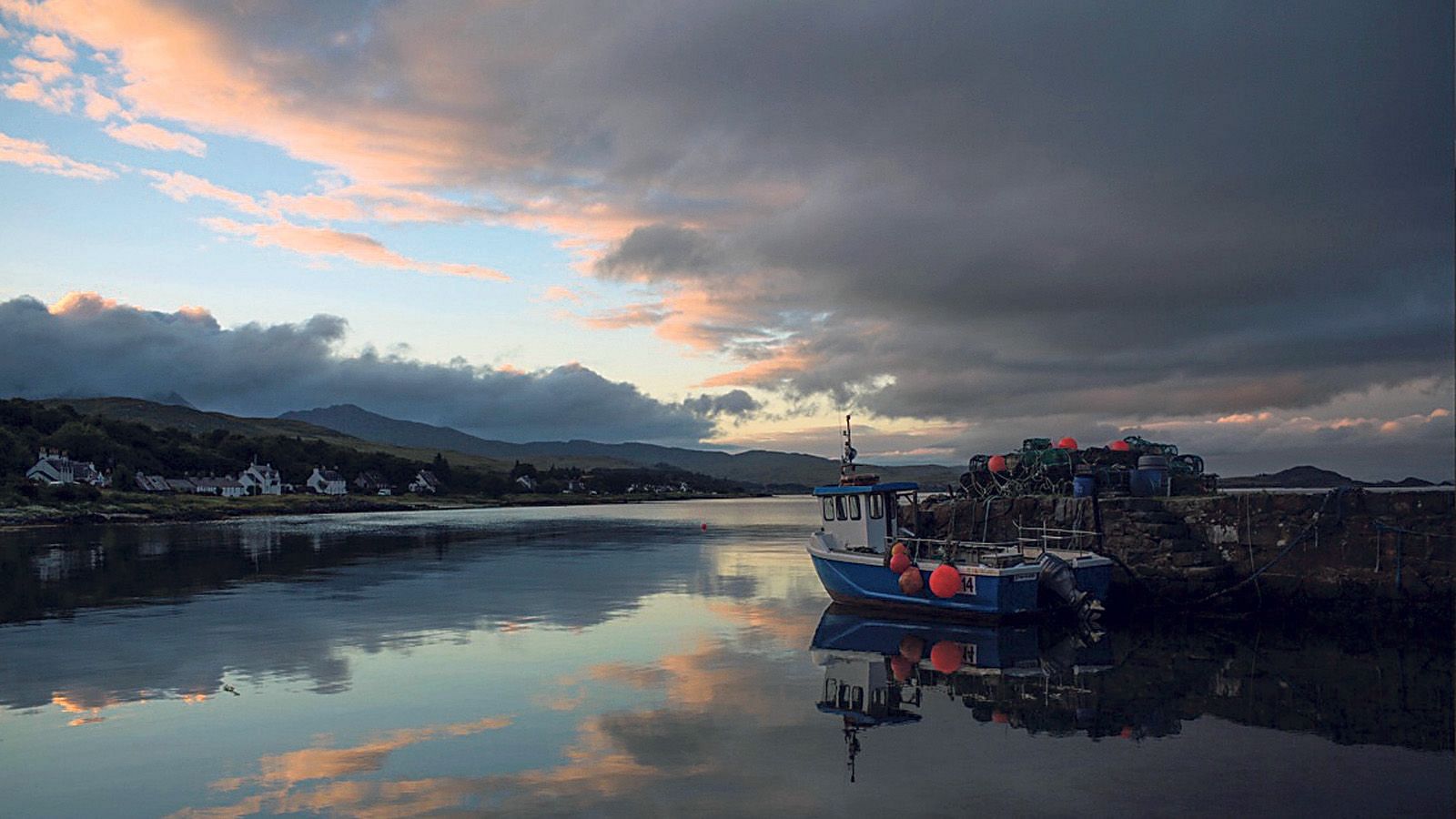 Jura harbour by twilight. PHOTO: DAVID GUTTENFELDER, JURA & BRUICHLADDICH
Jura harbour by twilight. PHOTO: DAVID GUTTENFELDER, JURA & BRUICHLADDICH
Whisky lovers making the pilgrimage to Scotland's world-famous distilleries has become something of a travel cliché. But when you're in the cool, low light of the dunnage house at Cardhu in Speyside, surrounded by American oak casks stacked three-high, and sipping a glass poured straight from the barrel, any concern about unoriginality seems to dissipate.
When you consider Scotch's long history – the first official record of distilling dates back to 1494 – whisky tourism is still a relatively new trend. It began in the 1960s, when Glenfiddich, Glenlivet and Glenfarclas opened visitor centres, but didn't really take off until the 1990s.
Today, Scotland's national drink is also its biggest export. Last year, 39 bottles were shipped overseas every second, with an export value of £4.37 billion (S$7.8 billion).
If Scotland experienced a whisky tourism boom in the '90s, the next decade is set to go nuclear. In 2016, the country's Scotch makers notched up a record number of visitors – 1.7 million – an eight per cent increase year on year. Currently, there are about 118 active distilleries spread across five regions, with another 30 or so being built. And exciting projects are underway across the board, from big-name brands Johnnie Walker and Glenfiddich, to boutique operators like Bruichladdich and Jura. It's reason enough to hit the whisky trail to discover uisge beatha's (Gaelic for water of life) new vitality.
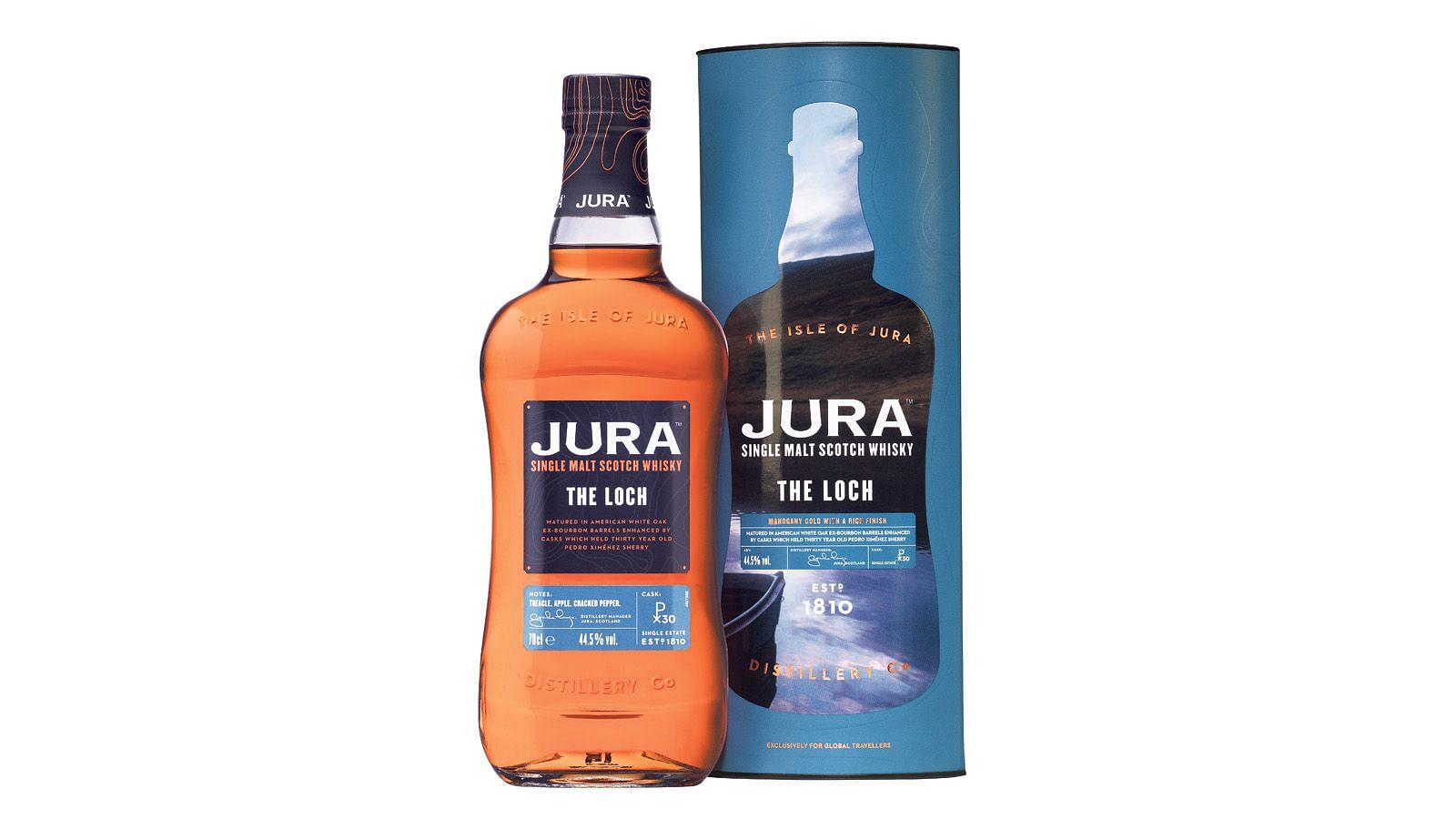 Jura's new travel-exclusive Sherry Cask Collection is named after the island's natural wonders. PHOTO: DAVID GUTTENFELDER, JURA & BRUICHLADDICH
Jura's new travel-exclusive Sherry Cask Collection is named after the island's natural wonders. PHOTO: DAVID GUTTENFELDER, JURA & BRUICHLADDICH
The matriarch of malt
Our first stop is Cardhu, a single malt distillery that supplies and acts as a home to Johnnie Walker in Speyside, where half of all Scottish distilleries are found. The first distillery officially pioneered by a woman, Cardhu was founded by Helen Cumming in 1811 as an illicit operation, and licensed in 1824. Today, photographs of Ms Cumming and her descendants can be seen on a whisky-tasting tour – led occasionally by Diageo global malts ambassador Donald Colville, whose great grandfather traded with the Walkers.
"I'm used to being shown up by the cows," says Mr Colville when we are distracted by Cardhu's Highland cattle one sunny spring morning. Nonetheless, he is soon the focus as talk turns to Diageo's £150-million investment in Scotch tourism. The centrepiece will be a new state-of-the-art Johnnie Walker immersive visitor centre based in Edinburgh. But as one of four regional distilleries crucial to the art of whisky blending, Cardhu's facilities will also receive a significant overhaul.
"The cows will have to move, I'm afraid," says
Mr Colville, hinting at a new building for the site. But while the setting may change, the spirit will remain the same. "We're not reinventing the wheel," he says. "It's still a very hands-on process, and the way they're technically making the whisky is the same as it was made by Helen Cumming all those years ago."
The valley of the deer
A stone's throw from the formidable Balvenie castle ruins – the 13th century structure once hosted Mary Queen of Scots and King Edward I of England – Glenfiddich in Dufftown tells a similar tale of familial tradition and expansion. One of the most awarded single malt Scotch whiskies in the world, the company has also been family owned and run for five generations.
Their story began with William Grant, who bought a piece of land at what was then known as Glenfiddich (Gaelic for valley of the deer) in 1886. Together with his family of nine, Mr Grant built the distillery by hand in one year. Over lunch in the original malthouse building, at the superb Malt Barn restaurant, William Grant & Sons brand ambassador Alan McArthur chats about the new still house and tun rooms being built on-site.
"Supply and demand is through the roof. We are adding more mash tuns and washbacks because that's where the bottleneck is," says Mr McArthur. Though the distillery – which runs several daily tours – produces between 12- and 14-million litres of spirit each year, the Grant family insists on making Scotch via the traditional methods. These include using wash vats imported from Canada, made from Douglas Fir instead of modern stainless steel. "I think the family have remained traditional because this is their family home – and it's been very, very good to them," says Mr McArthur.
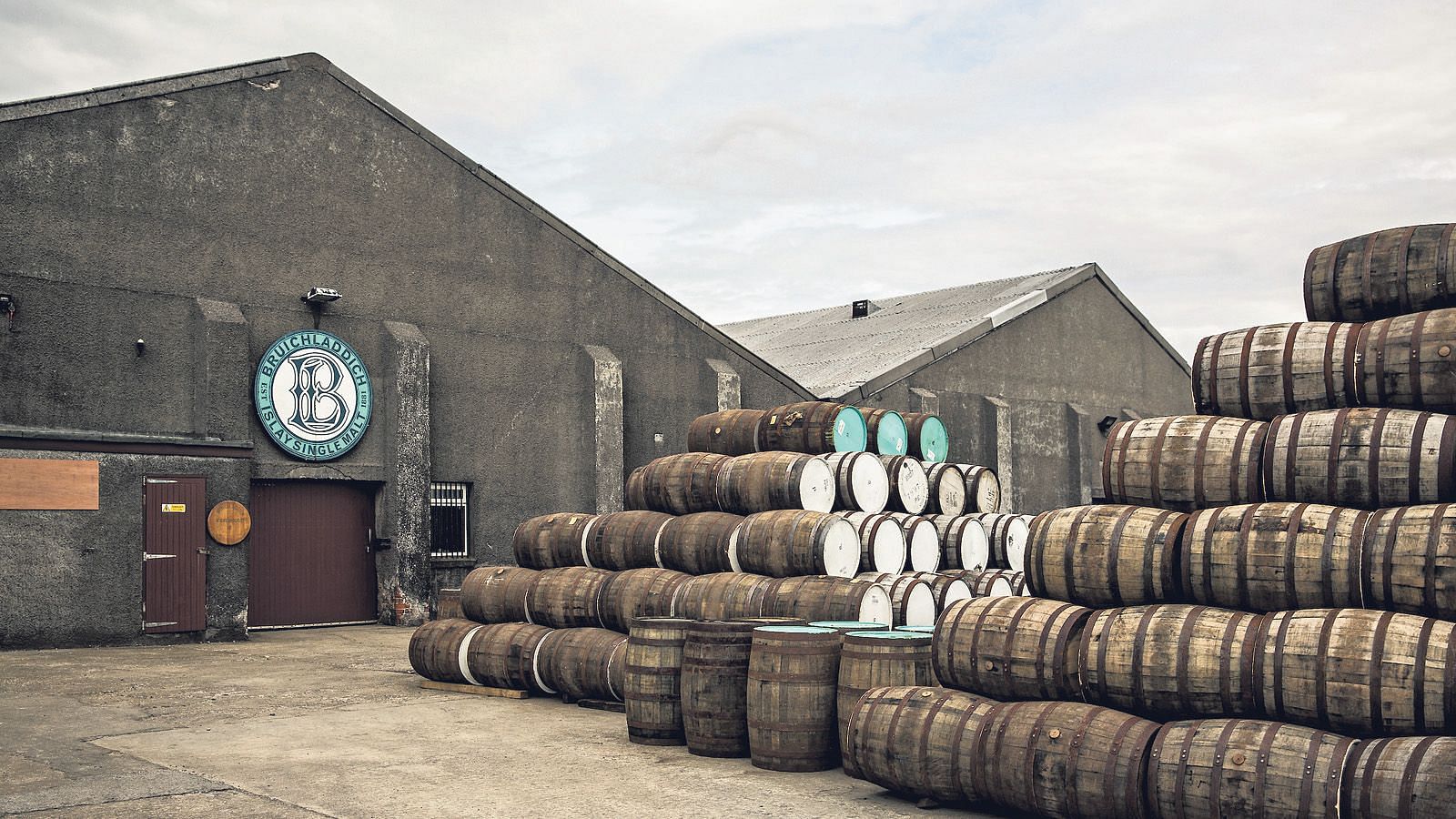 Casks are painted different colours at Bruichladdich, to denote how many times they have been filled. PHOTO: DAVID GUTTENFELDER, JURA & BRUICHLADDICH
Casks are painted different colours at Bruichladdich, to denote how many times they have been filled. PHOTO: DAVID GUTTENFELDER, JURA & BRUICHLADDICH
Old process, new vision
The Isle of Islay (pronounced eye-luh) has nine distilleries, including Bruichladdich (pronounced brook-lah-dee). On a blue-sky day, distillery ambassador Raymond Tibbs leads the way through a field dotted with yellow gorse, to the site of the Octomore spring. Its water is a key component in the world's most heavily peated single malt Scotch.
Inside a small wooden shed, the well – about a metre deep, with an unknown, perhaps ancient source – is fast becoming the stuff of legend. "It's ice cold and crisp, I feel younger already," says Mr Tibbs as he takes a sip. It's a nice metaphor for Bruichladdich. The boutique distillery opened in 1881, was abandoned in 1994, then resurrected in 2001. It still uses machinery and techniques from the Victorian era but is led by a risk-taking new guard, who believe passionately in terroir.
"We like experimentation," says head distiller Adam Hannett. The brand's classic Scotch is unpeated, floral and complex – and ever-changing. "We don't seek consistency in our whiskies. We offer magical parcels because they're good just as they are. That puts some people off, and that's okay. We're not making whisky for everyone."
The team recently announced four new products for 2018, in bespoke opaque green bottles. They include the relaunch of the Port Charlotte 10, a heavily peated single malt; along with the codified and limited MC: 01, a 2009 vintage distilled from Scottish barley and matured in marsala casks.
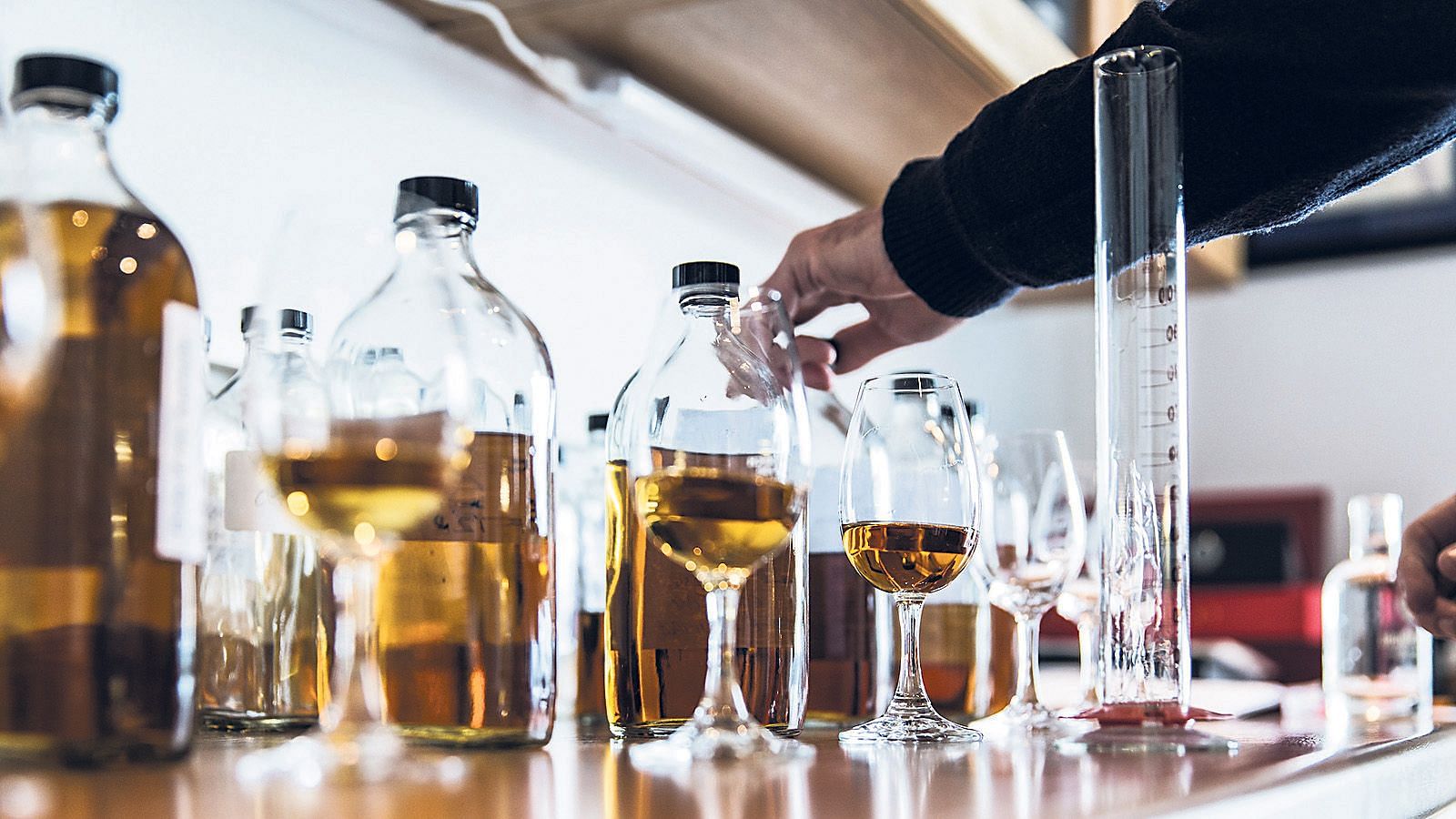 Lining them up at Bruichladdich. PHOTO: DAVID GUTTENFELDER, JURA & BRUICHLADDICH
Lining them up at Bruichladdich. PHOTO: DAVID GUTTENFELDER, JURA & BRUICHLADDICH
 Even a small dent in a copper still can alter the flavour of the whisky. PHOTO: DAVID GUTTENFELDER, JURA & BRUICHLADDICH
Even a small dent in a copper still can alter the flavour of the whisky. PHOTO: DAVID GUTTENFELDER, JURA & BRUICHLADDICH
Treasure Island
Elements of Bruichladdich's history seem to echo that of the Jura distillery. Built in 1810, Jura was dismantled in the early 1900s, and rebuilt in the 1950s and 60s using the original ruined buildings. And there's another similarity: the brand's new range of travel exclusives, the Jura Sherry Cask Collection, also celebrates the island on which it's created.
The distillery's namesake isle is one of Scotland's most remote and spectacular. A five-minute ferry ride across the Sound of Islay, Jura is home to more than 200 people and 5,000 deer. Author George Orwell wrote his masterpiece 1984 here almost 70 years ago, and visitors can stay in his isolated former cottage, Barnhill.
When Orwell first arrived, he made swift plans to move to the island. It's a familiar story. Everyone from the distillery visitor centre manager Rachael Jones, to Alex Dunnachie, who runs the fantastic Jura Island Tours, came to visit and never left. The distillery's new whisky collection, named after Jura's striking natural wonders, may explain why.
There's "The Sound", for the body of water containing the notorious Corryvreckan whirlpool. "The Loch", 10,000 feet above sea level, which provides pristine water for making whisky. "The Paps", for the three mountains that dominate the landscape. And – a worldwide exclusive to DFS – "The Bay", where seals and otters frolic in the ocean in front of the Jura Hotel, home to the island's lone pub and the ideal place to enjoy a dram.
This was first published in The Business Times. Click here to read the original story.


